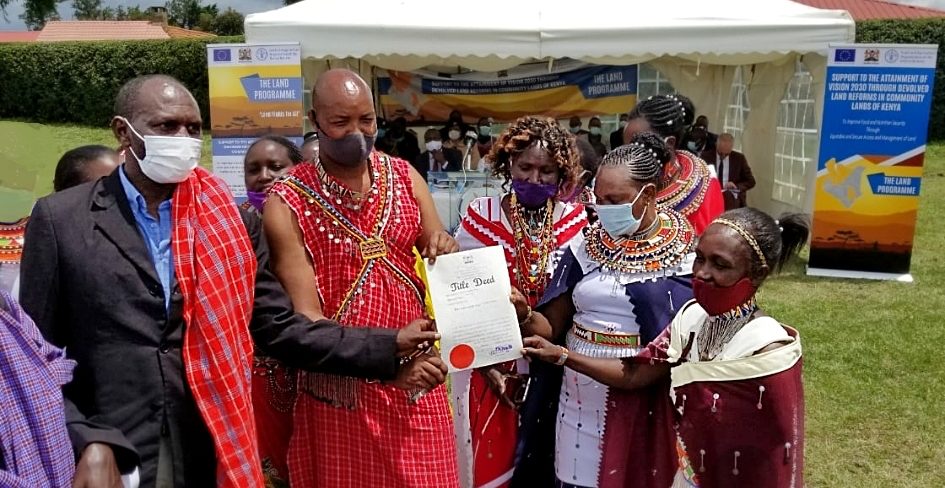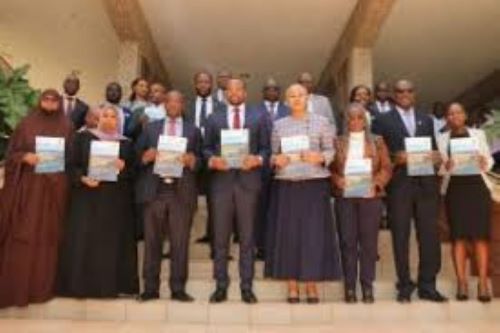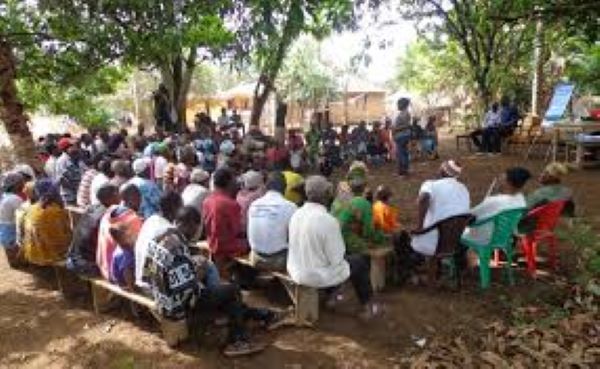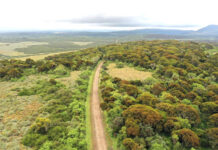By Henry Owino
Nairobi, Kenya: Most of the huge chunks of land in pastoralist areas of Kenya are held by group ranches instead of communities. On the other hand, just a handful of community lands are registered with title deeds.
Individuals holding the group ranches claim ownership which the law does not recognize hence no title deeds. According to the law, any unregistered public or trust lands are held by national or county governments respectively.
So, any group ranches earmarked as parcels of land for public facilities and amenities require the National Land Commission (NLC) to survey, map, and gazette as set aside for public purposes as public land. Additionally, NLC is also required to document the list of public lands within the community lands and proceed to gazette them for registration.
According to Nixon Korir PS who represented chief guest Zachary Njeru, Cabinet Secretary Ministry of Lands, they are mandated as the state department of lands and physical planning to manage the national land policy, land adjudication, land registration, and land information system among other functions. The mandates are implemented through various acts of parliament and in particular for land adjudication, it has the Land Adjudication Act, Cap 284.
The Constitution of Kenya 2010 recognizes community land and its rights. Community land includes; land lawfully registered in the name of group representatives and land lawfully transferred to a specific community by any process of law.

In addition, the law provides that community land shall be vested in communities on the basis of ethnicity, culture, or similar interests.
The Constitution further states that community land shall not be disposed of or otherwise used except in terms of legislation specifying the nature and extent of the rights of members of each community individually and collectively.
Unregistered land is held by County Governments in trust of communities under the Trust Land Act. Upon promulgation of the Supreme Law, it further required parliament to enact legislation on community land rights within five years.
Law enactment
Pursuant to the Constitutional requirements, parliament enacted the Community Land Act in 2016. The Act repealed the Land Group Representatives Act, Cap 287, and Trust Lands Act, Cap 288, and provided for a mechanism through which land held under the Group Representatives Act is transitioned into community land.
The Community Land Act, 2016, therefore was enacted pursuant to Article63 of the Constitution. It is the main legal framework that provides for the recognition, protection, and registration of community land rights; management and administration of community land; and the role of County Governments in relation to unregistered community land.
To ensure all these processes are adhered to and implemented effectively, the NLC which had been formed under Constitution 2010, is tasked with the responsibilities to monitor the registration of all land rights and interests in land. The NLC under Section 5(2)(b)of the National Land Commission Act 2012 permits it to monitor and measure the effectiveness of the registration processes and determine if the programmes are on track.
The NLC also enables the assessment of government performance in land administration, policy design, and policy reform. Monitoring is an important tool for promoting constructive, inclusive, and evidence-based dialogue on land issues.
Joint case study
Kabale Tache, NLC Chief Executive Officer revealed that in 2021, NAMATI- Kenya, a paralegal organization, and NLC entered into a memorandum of understanding (MoU) to jointly undertake the study to monitor the transitioning of group ranches to community land in Kenya. It aimed at ensuring the land policy principles enshrined in the Constitution, such as inclusivity and equality, are upheld throughout the process.
“This marked the first time since the enactment of the Community Land Act, 2016 that a monitoring of the transitioning of group ranches to community land would be conducted,” Tache noted.
Tache made the remarks during the launch of a report on; Monitoring the Transition of Group Ranches to Community Land in Kenya held on Tuesday, 3 October, 2023 at a hotel in Nairobi. The event was attended by Commissioners Reginal Okumu, Hubbie Hussein, and Esther Murugi among other secretariat staff.

Other organizations represented were development partners among them FAO, ICIPE, Action Aid Kenya, Samburu Women Trust, the Kenya Editors Guild, Institution of Surveyors of Kenya, Association of Licensed Land Surveyors of Kenya, and KELIN among others.
Surprisingly, 6 years after the enactment of the Community Land Act in 2016, only 46 (14.6%) out of 315 undissolved group ranches across 11 counties successfully transitioned to community land, thus by 16 May 2023, a survey that began in 2017, 63 (20%) were undergoing subdivision.
Counties that Namati and NLC sought to establish their status of transition of group ranches so far include; Laikipia (13), Samburu (21), Kajiado (2), West Pokot (5), and Taita Taveta (5).
The report indicates that by November 2021, three ranches out of 16 had completed the process and received their community title deeds while 10 were in the process of transitioning.
Two group ranches Korelach in West Pokot and Olkeramatian in Kajiado indicated not interest in transitioning despite earlier application for dissolution with intent to subdivide. One was yet to decide on whether to proceed with transitioning or pursue subdivision.
The report shows communities such as Olkeramatian had applied for dissolution/subdivision and received a consent letter from the Registrar before the passing of the Community Land Act could legally proceed with subdivision. However, those who did not receive a consent letter before the passage of the Act like Korelach members are required to first transition to community land. Next subject the subdivision decision to the community assembly, which includes all adult members of the community.
Significance of transition
According to Eileen Wakesho, Director, of Land and Environmental Justice, NAMATI, the Community Land Act 2016, was a step in the right direction in the quest to secure land tenure rights for indigenous and local communities and address women’s exclusion in land ownership and governance.
“Thanks to the Constitution 2010, for coming to the rescue of women and ethnic minorities who have suffered discrimination, land dispossession, and political marginalization for generations. Loss of communal and family lands deprives Kenya’s most vulnerable citizens especially women, of their source of livelihoods, heritage, identity, and political power,” Wakesho acknowledged.
the report, the majority of the community members 63% from the 16 group ranches have confidence that the transition process, once complete, will improve tenure security. Again, it will strengthen governance structure, and improve levels of involvement in decision-making.
The Community Land Act leads to improved governance by devolving land administration to local institutions at the community level through the Community Land Management Committee and the community assembly.
The Act vests decision-making on all matters that affect members’ access and use of land to the community, a step further than the Group Representatives Act which had vested these powers in the group representatives/ranch committee.
This devolved power is seen by many community members as an opportunity for them to participate in shaping decisions over their lands and natural resources.
This inherently improves their sense of perceived tenure security. Many believe that if they can participate in decision-making, then they can secure their land for future generations.
Challenges slowing progression
The slow rate of transition is due to conflicts and disputes within and amongst the group members, financial constraints, inadequate information on the processes and procedures, and challenges related to the registration processes.
The inventory process is a challenge as some counties take too long to confirm the names to be used while other constituencies are too vast when it comes to decision-making.














